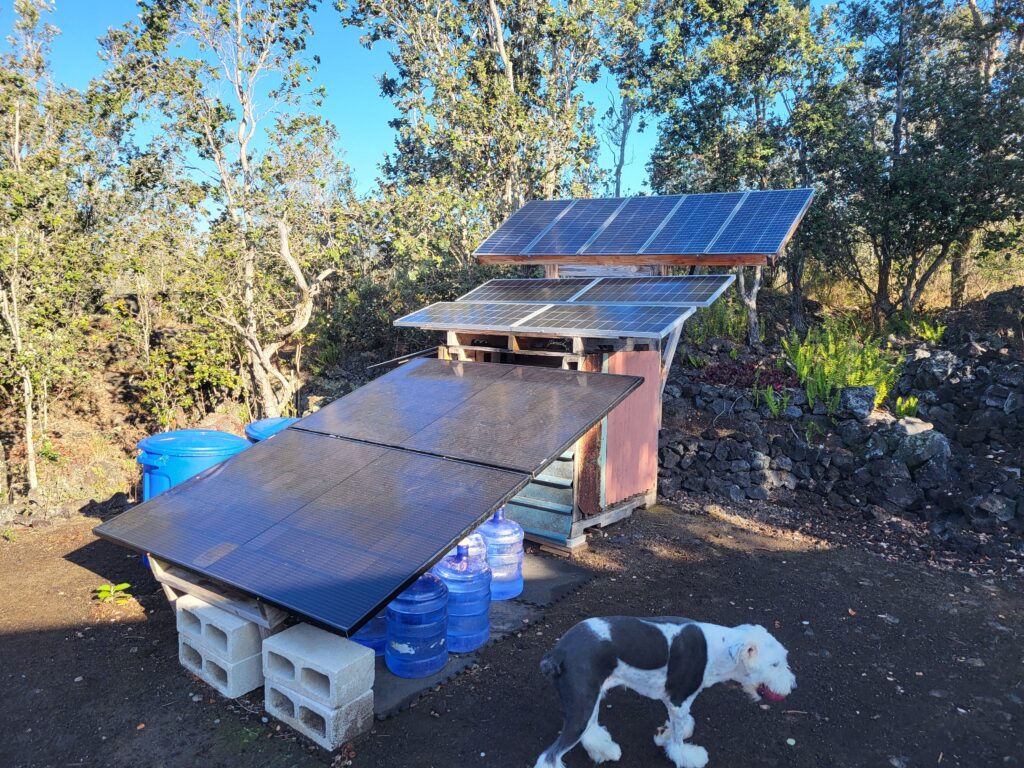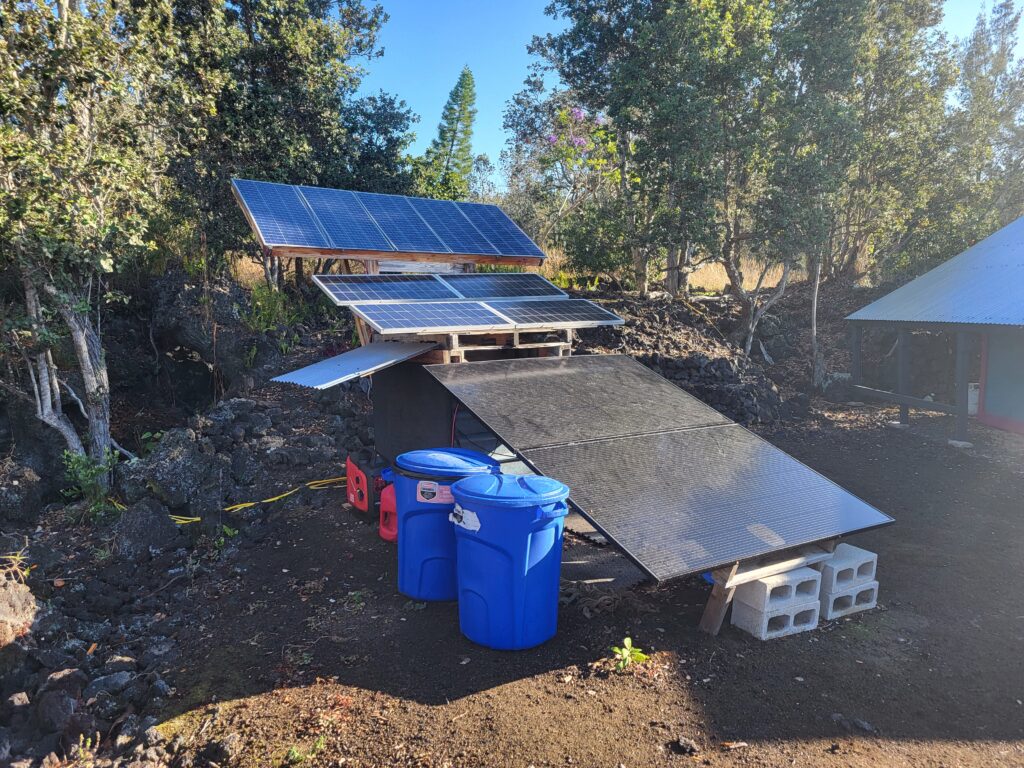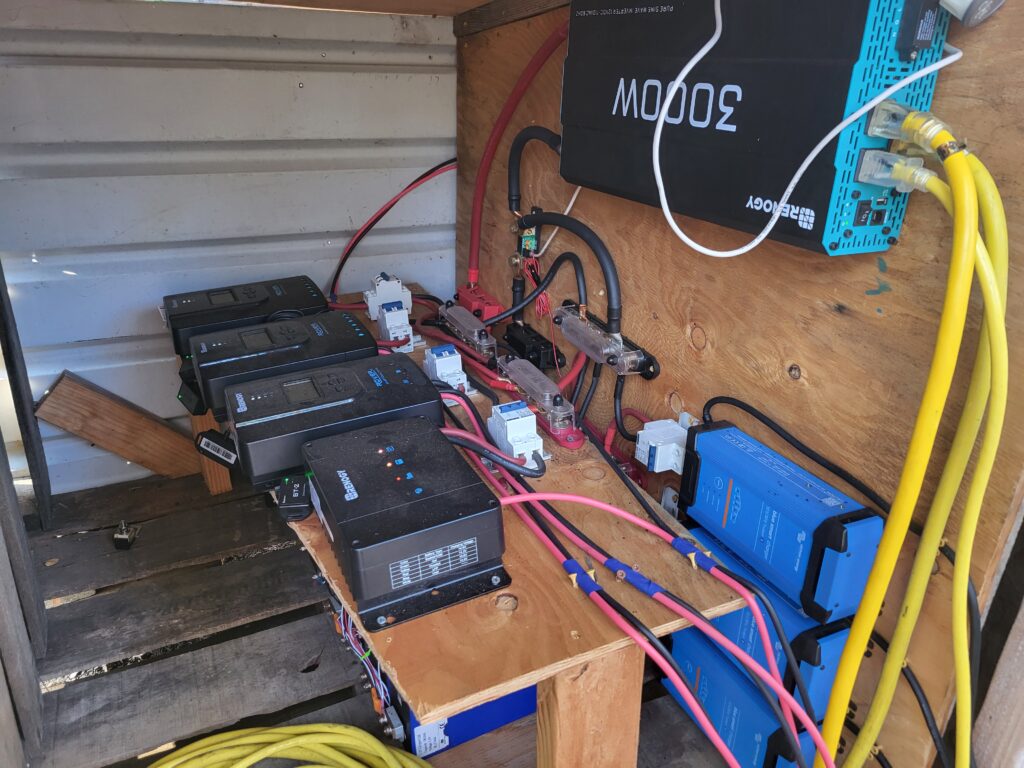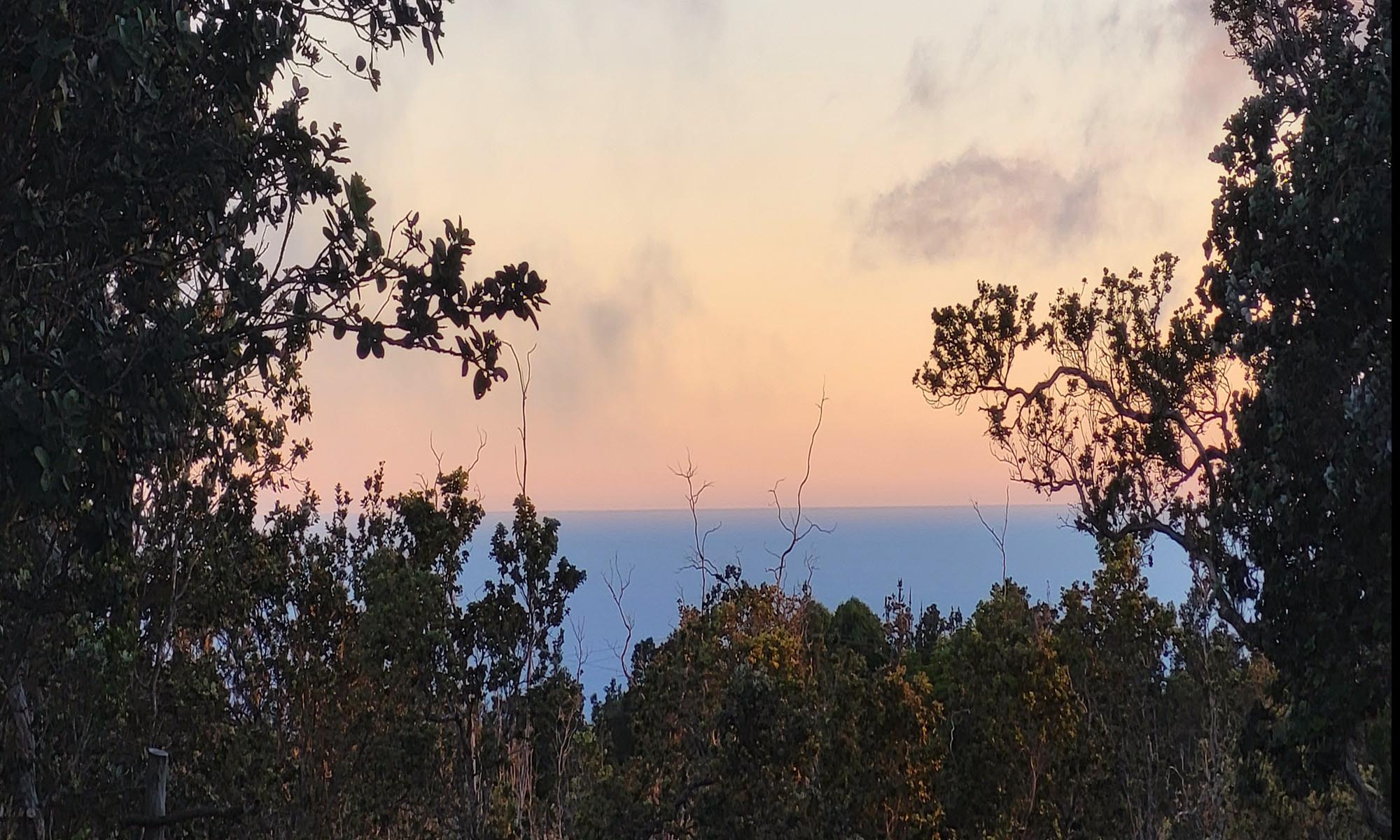The Shower
This is a simple little building that allows you to take a shower rain or shine in comfort, amongst the lava and the trees. There is plenty of space in here as the base of the structure is a four foot by four foot box that has been filled with small lava to allow the shower water to filter down into the ohia tree roots. The propane shower unit itself a a basic Gasland hot water heater / shower unit that is hooked up to a 12v water pump with its own small battery, and uses a 65 gallon trash can to hold the water for it. This gives plenty of water for showers, as long as you don’t want to take very many super long ones. We have found that our usual showers take around 5 gallons of water, but we have gotten pretty good at keeping them quick with not much time spent with the water running.
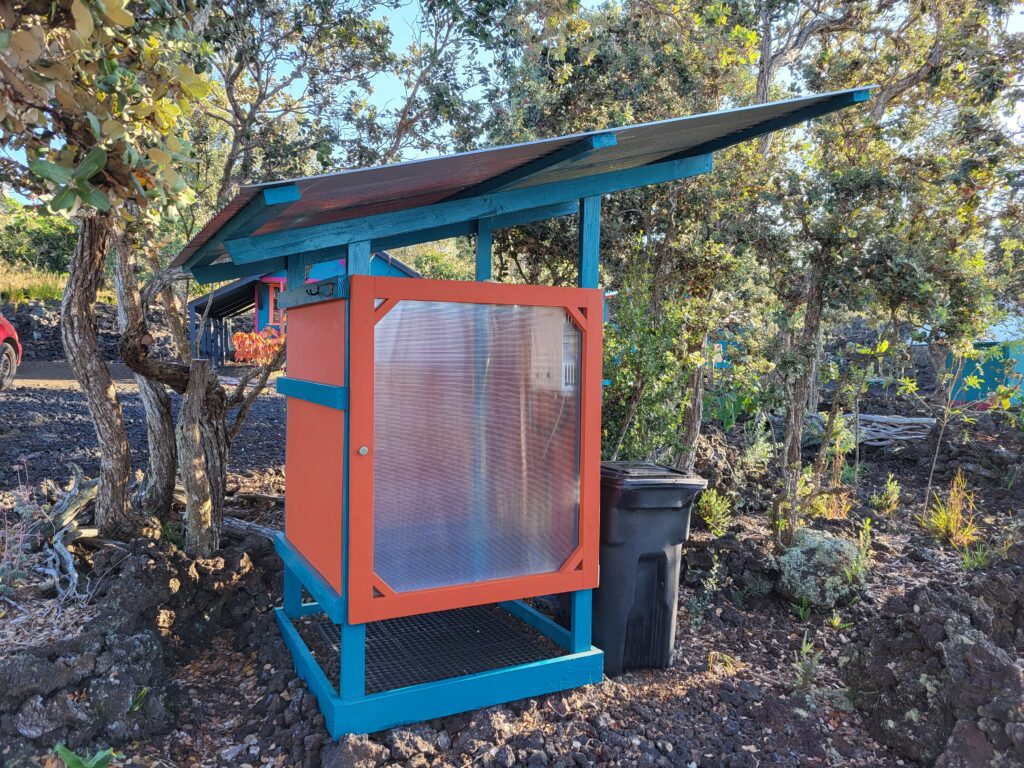
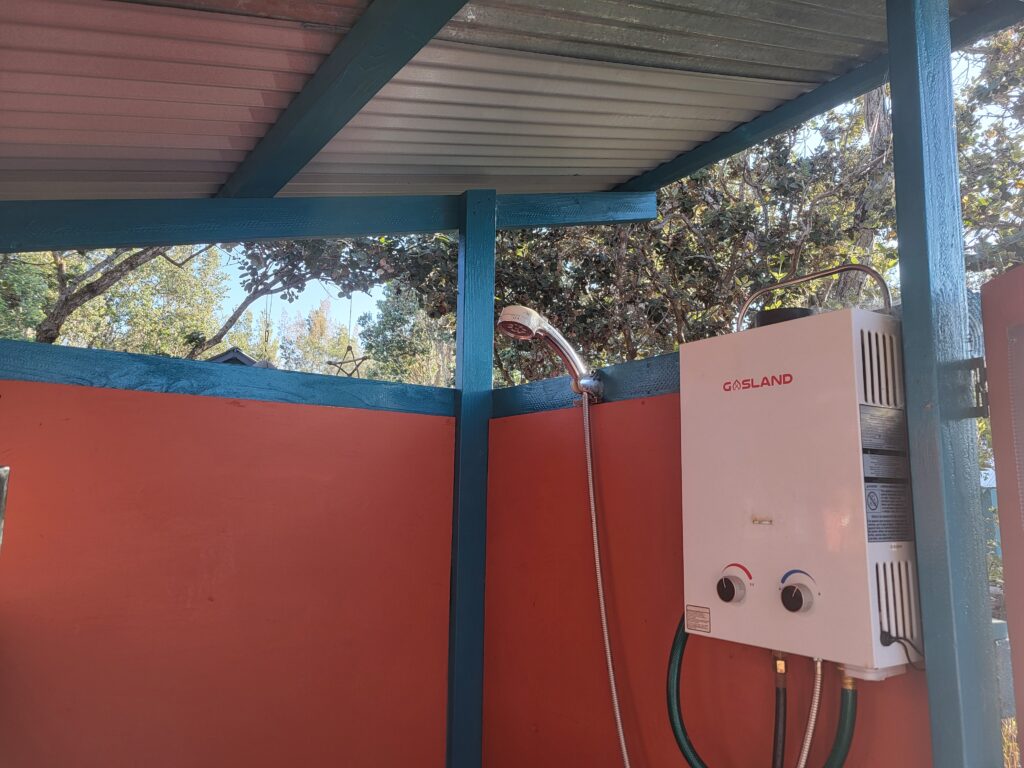

The Outhouse
This structure also has a four foot by four foot floor, but instead of lava this has a plywood bottom and is considerably more enclosed. The wind here typically comes from the backside of the property, so that wall is completely soil and blocked off, with openings above and below the door, and a small gap on the low side of the roof line. We have been using a simple composting toilet solution, but a good upgrade would be one of the Natures Head composting cassette toilets, as it would be easy to take care of the end product once it fills up. I would recommend looking into how to compost your own humanure to use it as another input on the homestead, as it can be a great way to feed flowers and trees.
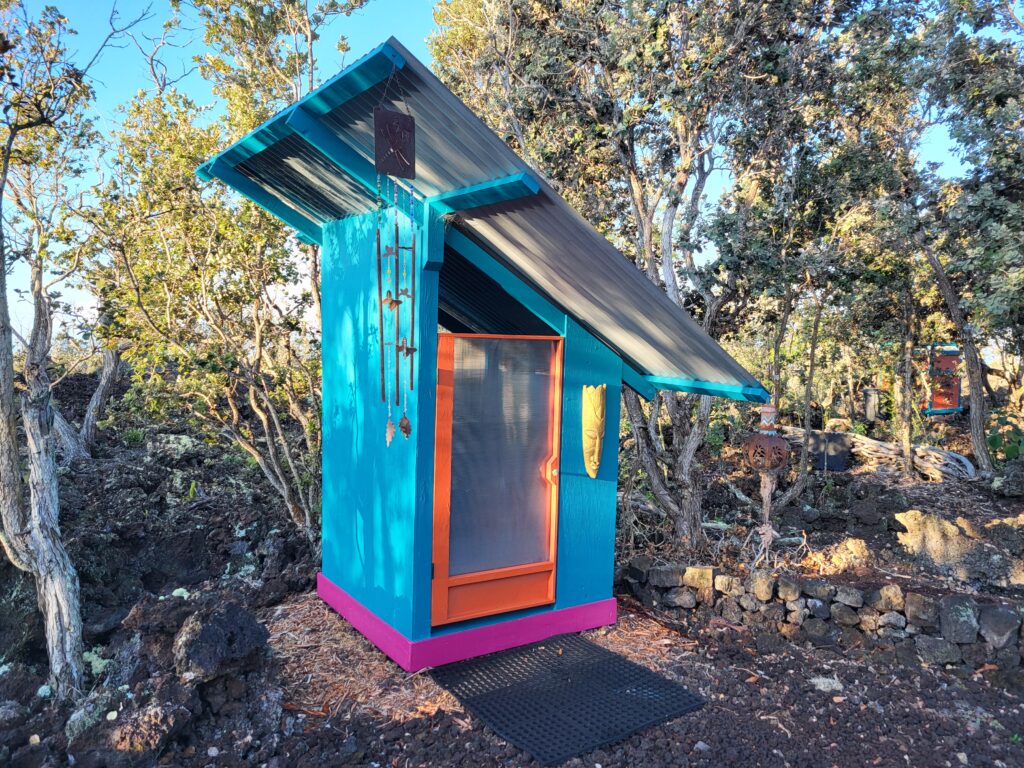
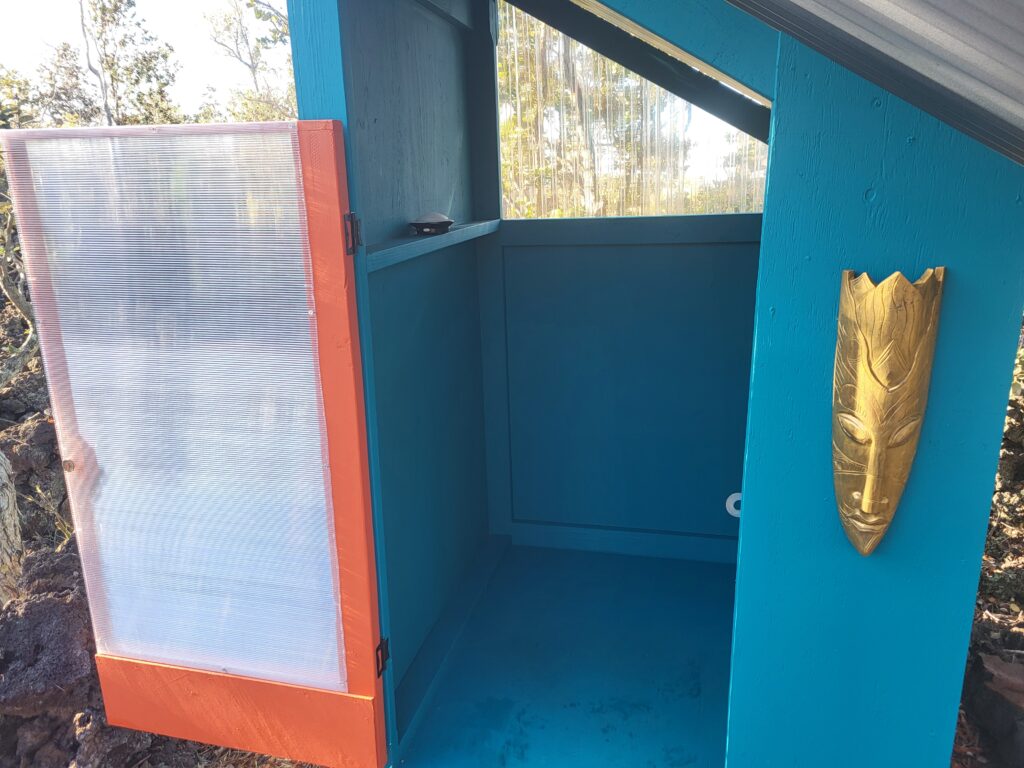
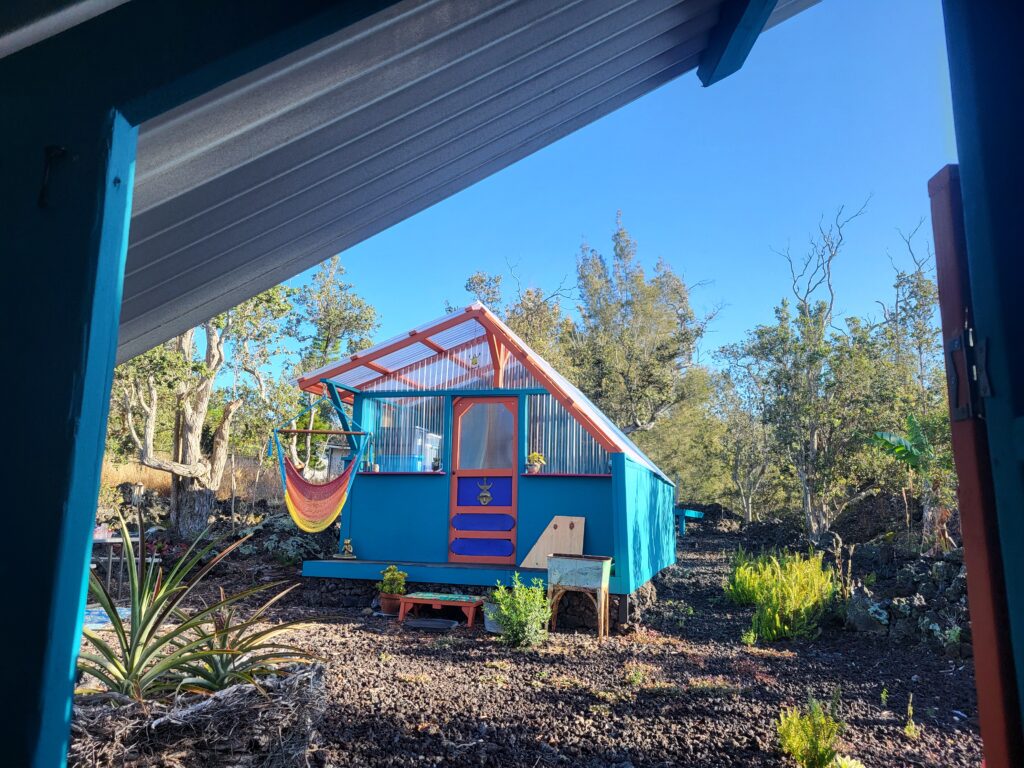
The Yoga Platform
This is actually the first structure of any kind that we built when we first arrived, and I initially thought that I would be building a small storage shed on the platform to hold all of our tools. That ended up not happening and the platform was just a skeleton for a while with no top on it. I eventually decided to put a piece of plywood on here though, and it has been a really great place to do yoga, or just a nice place to sit drinking morning coffee as the sun comes up. You could easily build a small structure on here like I initially did, or just keep using it in its current form. It is in the very back corner of the property behind the greenhouse, and the morning light that filters through the trees is beautiful.
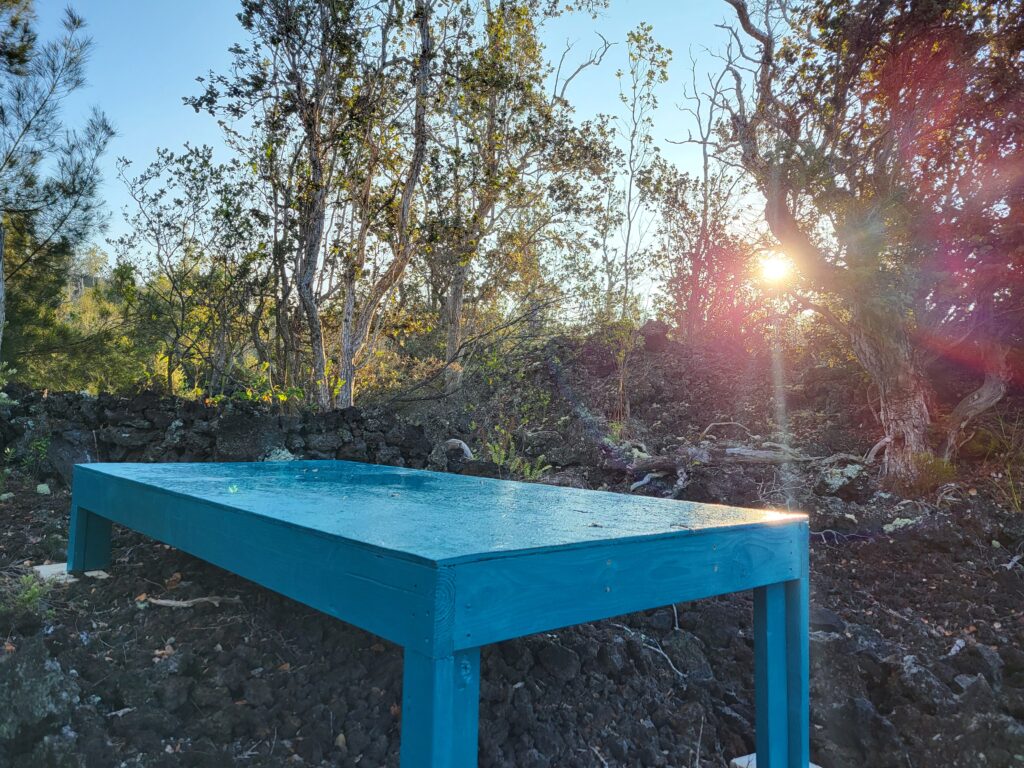
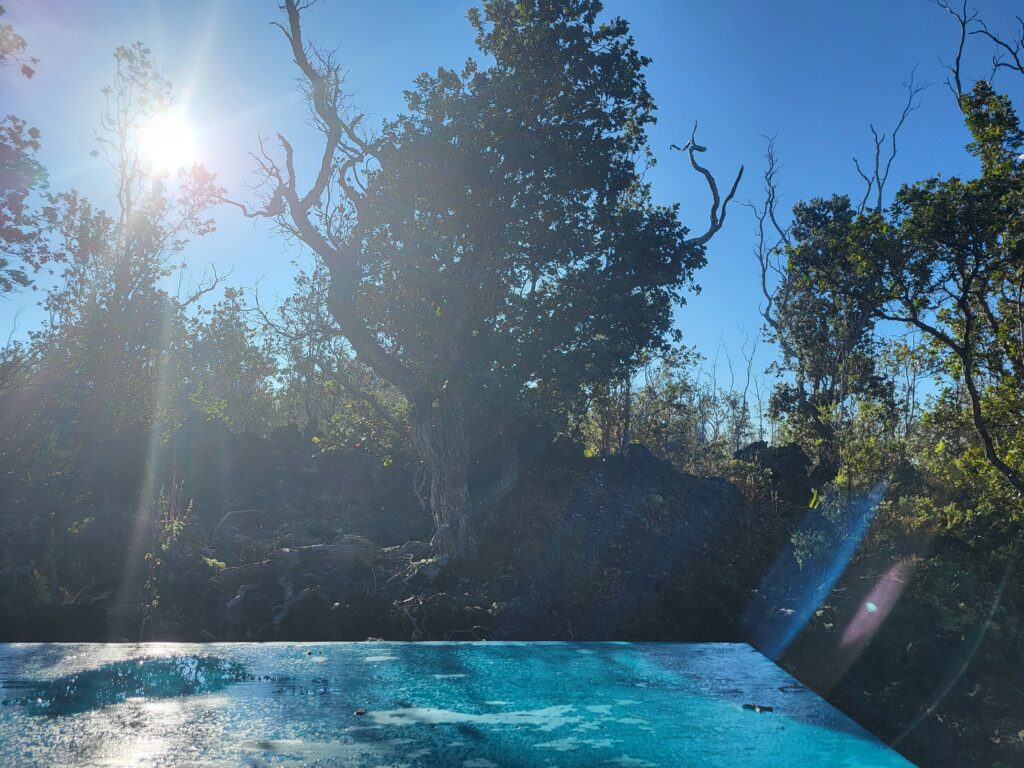
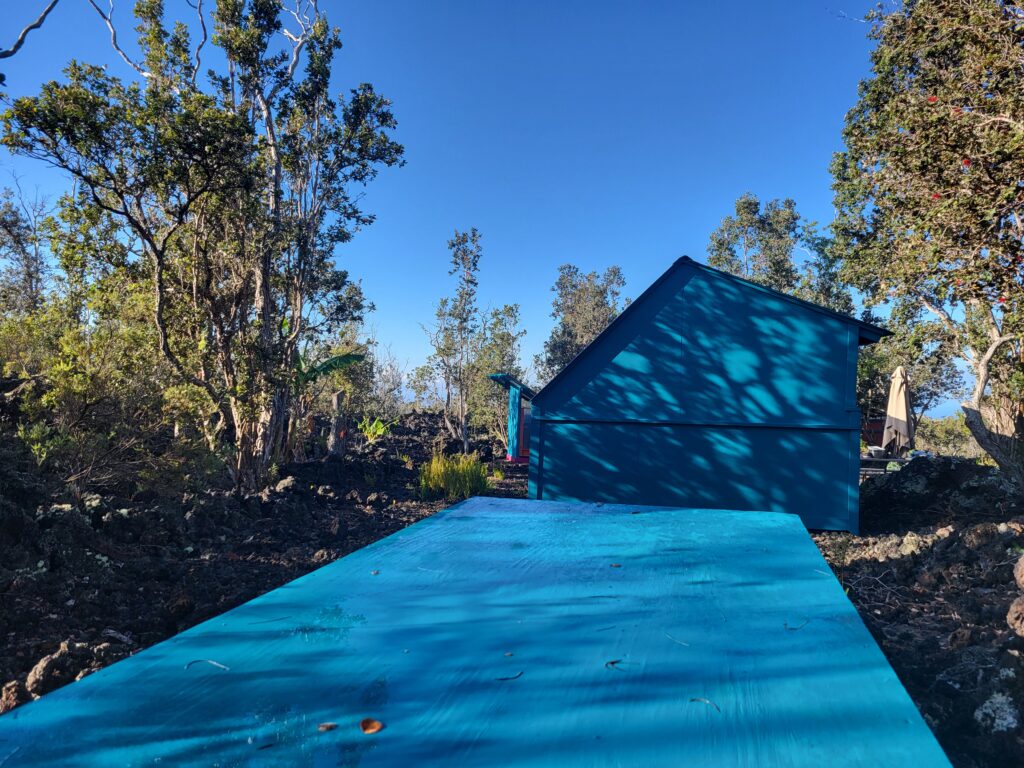
The Solar
This is our 12v solar system that started its life powering our camper van, and has grown over the last couple of years. It is a great system for what we use it for, but is not going to be able to do everything at once. We have a 3000w inverter, which will run one heavy use appliance plus the rest of the normal small stuff. As an example we have a file server running, along with the refrigerator, Starlink, and my laptop. I can also decide to run the microwave, or the toaster, or the water boiler, or the griddle … but only one of them. Here is a list of what the stats of the little solar unit has going on.
Solar Panels:
2x 415w Bifacial Solar Panels
These are the two large lower panels. You can get a little more performance out of them if you were to put a light colored ground covering behind them as they are bifacial, but even as they sit I have seen them produce as much as 440 watts of power each in the summer. These are each connected into their own Renogy 40A MPPT controller.
4x100w Solar Panels
These are our four original solar panels that we used in the camper van. They are hooked up in parallel into the Renogy DCC30S.
1x400w Portable Solar Panel
This is technically a portable solar panel, but is really too heavy to be moved regularly so I just built a mount for it on the back top of the solar structure. This is connected into its own Renogy 40A MPPT controller.
Solar Charge Controllers:
1x Renogy DCC30S 30A Dual Input DCDC Charger with MPPT
This is the original MPPT controller that we used in our camper van. It also has the ability to charge from the alternator of a vehicle, which is why we chose it. It is currently set up with the 4x 100 watt solar panels, and works fine. You could pull this out and put it into a rig though very easily, and it would be a great setup for that. We have added in the correct Bluetooth Antenna for this unit so you can check on it with the Renogy App.
3x Renogy 40A MPPT Controllers
These are really just workhorse solar charge controllers, and all of them have the correct Bluetooth Antenna connected to them so that you can check on them with the Renogy App. They can handle a maximum of 520 watts of solar input at 12v, so are perfectly sized for this application as you want to have some headroom above the output of the panels.
AC/DC Charging System:
3x Victron BlueSmart 12v 30A chargers
These are what will convert AC power from the generator into DC charging current for the batteries. While there is a lot of sun here on the property, there are also times when there are a lot of clouds, and you need to have a generator to keep the power going. Each of these can provide up to 30A of charging at 12v, although I have them set to 27A each because of the small generator that we have. I typically only have 2 of them running as that keeps the generator at about half of its max draw, which is where you want it to be. When I need the extra juice however I can flip the breaker to kick the third one on as well, and with all three going it will provide a little over 1000w of charging into the system.
1x PowerSmart 2500w Inverter Generator
They say that this unit can provide up to 1900w of maximum continuous draw, which for our use case means that I can set all three of the Victron ACDC chargers to 27A without overloading the generator, but that will have the generator running at full bore which will last about 3 hours on a tank of gas. However if running it with one of them turned off as I usually do, that ups the run time to around 6.5 hours, while still providing 2/3 of the power, which works out best. If possible you want to keep a generator at about half power for maximum effeciency.
Power Conversion:
Renogy 3000w 12v pure sine wave inverter
This is one of the largest inverters that you can use with a 12v system, and has been an absolute champ for us. 12v systems are hard as you need to use very large cables at such a low voltage, and if I were to do this all over again from scratch I would go with a 48v system, as the cable requirements are so much smaller. There is a whole conversation that can be had about that however, and for smaller systems 12v is great.
Batteries:
1x 100ah 12v LifeP04
Smaller self contained battery. Not much to say here, this was very affordable on Amazon, so I gave it a try.
2x 280ah Prismatic Cell with Overkill Solar BMS
These are 2 batteries that I built myself. Each uses 4x prismatic Eve cells with an Overkill BMS to control them. They have worked great.
